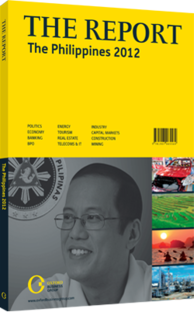A watchful eye: New regulations from the central bank
The Bangko Sentral ng Pilipinas (BSP), the country’s central bank, announced in 2011 it had approved revised guidelines on financial reporting and was modifying restrictions on the number of branches that can serve certain areas. BSP officials also indicated in late 2011 the regulator planned to accelerate the implementation of Basel III standards for the country’s banks, a move that could further bolster local banking stability.
BASEL III: In December 2011 Johnny Noe Ravalo, the managing director of the BSP’s central supervisory support sub-sector, said in an interview that the BSP could begin an early implementation of the Basel III banking standards, a process which was originally scheduled to begin by January 1, 2013. Basel III, a string of reform measures to shore up the regulation, supervision and risk management of banks, aims to improve their ability to absorb shocks arising from financial and economic stresses while also increasing transparency.
Before the implementation process begins, the BSP must issue local regulations in line with the Basel III capital rules. Ravalo said that these new regulations could be released sooner than January 2013, noting that the schedule set by international regulators may give rise to market uncertainty. “If you have the capital and you seem to have the liquidity, waiting an extra seven years to go to 2018 will add uncertainty,” he said. Basel III requires banks to comply with higher capital requirements before the end of 2018.
Compliance is likely not to be difficult for the country’s banks, as local financial institutions are already operating with a strong capital base. As of March 2011 the sector’s average capital adequacy ratio for universal and commercial banks stood at 16.48% on a solo basis and 17.42% on a consolidated basis, up from 16.23% and 17.27%, respectively, as of December 2010.
Moreover, the results of stress tests carried out by the BSP in mid-2011 indicate that the banking system is stable. In October 2011 the governor of the central bank, Amando Tetangco Jr, announced that these tests showed the country’s 55 universal, commercial and thrift banks could absorb a write-off on loans as large as 50%, an increase of 5% in peso and dollar interest rates, and a 30% depreciation of the peso against the dollar. In mid-December 2011, bank officials said a second set of stress tests would be conducted in the near future, in part due to continued concerns regarding difficulties in the Eurozone and elsewhere. This new set of tests would focus on liquidity and liability risks.
ACCOUNTING STANDARDS: In July 2011 the central bank approved additional guidelines on the early adoption by banks of a new set of reporting standards known as Philippine Financial Reporting Standards (PFRS) 9 Financial Instruments, initially introduced in January 2011 and part of a larger three-part project to replace certain existing accounting rules regarding the measurement of financial instruments. Banks will be required to adopt PFRS 9 by January 1, 2013, but they can opt to do so earlier. The expanded guidelines for early adoption include the classification and measurement of both financial assets and financial liabilities.
INCREASED COMPETITION: Meanwhile, in a bid to improve the competitive landscape, the BSP approved in June 2011 a two-phased liberalisation programme that would lift the ban on establishing bank branches within eight key cities in Metropolitan Manila. Private, domestically incorporated universal, commercial and thrift banks that have fewer than 200 branches in the previously restricted areas will be allowed to open branches in these cities until June 2014. The branch restrictions will then be fully lifted starting in July 2014.
To apply for the establishment of new branches, universal or commercial banks must have combined capital accounts of at least P10bn ($227m), while a thrift bank must meet a minimum of P3bn ($68.1m). Estimates show that based on the minimum capitalisation rules, about 14 of the 22 domestic universal and commercial banks would qualify to open new branches. The new rules will likely benefit mid-sized banks, as many top banks like Banco De Oro Unibank and Bank of the Philippine Islands have already hit their 200-branch limit.
You have reached the limit of premium articles you can view for free.
Choose from the options below to purchase print or digital editions of our Reports. You can also purchase a website subscription giving you unlimited access to all of our Reports online for 12 months.
If you have already purchased this Report or have a website subscription, please login to continue.

